
I believe in San Antonio, that this place has an ancient and enchanted history. People have lived here for hundreds of generations, that’s for sure, thousands of years. They hunted and gathered and told their stories and sang their songs and danced their dances and lived their lives without really changing all that much and without destroying the environment they lived in. Something we could learn.
How were they able to do that? I’ve thought about it many times. It certainly is a lofty achievement - existing in cooperation with but not domination of your natural world.
By living in reverence, is the answer I come up with, by living in gratitude for the blessings of Father Sky and Mother Earth. By living in harmony with the natural elements they found themselves surrounded with. By having ‘enough’, having a ‘pinnacle culture’ where, no matter how primitive it may appear to us, they had the tools and skills sufficient for the tribe to survive and prosper.
Although there has never been any proper archaeology done about the first people to live here - 12,000, 15,000 maybe 20,000 years ago, there are some things that can be surmised about the deep history of San Antonio.
They were born and lived among the trees that grew all along the banks of the gentle streams that flowed down from the hills to the north and from the springs that flowed up out of the earth, this much can be surmised. The water fed the trees and the trees fed the people. And the source of the water, where it emanated from the earth, where it sprang forth from the rocks, that place was a blessing and an energy center. It was a sacred site. It’s where they worshipped Mother Nature herself. That’s not just my opinion it’s also the account given to me by the descendants of the ancient people who still live around here.

The watershed of all those streams that coursed thru this area roughly matches the outline of present day San Antonio. This metropolis, this giant city, seventh largest in the nation and growing fast as a Texas Sunflower, urbanized and developed, with giant housing tracts spreading out for miles, industrial sites, quarries, expressways and shopping malls - has buried any resemblance it once had to the natural state of things deep underground.
That’s important to know. What we see around us today is not what those ancient people saw around them. Missing mountain lions and deer, to mention a few, and the environment to support them.
We do have the Riverwalk, that’s a momento from the ancient past. From back when the river flowed clear and strong, not pumped out of the water treatment plant like it is today. We have the cascade fountains in HemisFair Park flowing like a Yanaguana in the rainy season. Yanaguana of course was the native name for the river: peaceful waters, healing waters. The Spanish named it the ‘San Antonio’ and that’s what we call it today. This place has been completely renamed since the ancient people lived here. We don’t even know what they called things. It’s not their town anymore, it’s our town.
But enough of that. Let’s talk about when this place was flowing with water, generous amounts of water in the streams and in the arroyos. There were dozens of them all over town and even today you can see them while riding around on your bicycle. The springs were the source of some of the rivers and they formed pools and marshes with their attendant biospheres where they gushed out of the ground. Fish, frogs, shellfish, alligators, birds and many others no doubt gathered there. The springs and the rivers were the bountiful gifts of Mother Nature, feeding her children, all of them, all along the waterway. That’s what made this place special.
One could easily surmise, in fact, that this was a Garden of Eden event. While here below Mother Earth was feeding all her children with her beneficence, above Father Sky was radiating his brilliant, warm sunshine and showering them with rain. That’s a pretty nice world to live in and that’s how they saw it.
Infact that’s probably how we would make a religion today if we grew up in a forest by the river and had no knowledge of modern science and weren’t influenced by modern society and by everybody else’s ideas or by a holy book that was passed down for generations. If we just knew what we knew and we felt what we felt, that’s probably the same religion that we would have. Anyways they did it that way, that’s how they constructed their world. And when everything was in balance, when everything was good, when Father Sky and Mother Earth were happy, then the people were blessed and there was plenty to eat.
So they grew up among the trees, and the trees grew up along the banks of the rivers and the rivers provided water and the trees provided food and it was good. Everything that was needed was provided. Everybody was prosperous, or nobody was prosperous.
Their wealth fell out of the limestone formations in the form of chert, the material they used to make stone tools and whatever they needed: a grinder, a metate, an axe, a knife. Just pick it up and shape it, you could make an arrowhead to hunt deer.
The deer was a magical creature, atleast to the old ones who lived out by the Pecos River in West Texas and left paintings on their cave walls. Maybe because they seemed to appear and disappear and if you were able to chase one down and get it, you would have bountiful resources to make clothes and a house and food to feed your family and Lord knows what else.
If we want to imagine those people who lived here 10,000 years ago, then we need to know that the climate was cooler and wetter back then. The Southern Plains were a luxurious grassland with herds of buffalo, horses and mastodons roaming about. They hunted them with massive stone spear heads hafted on to shafts and thrown at high speed with aid of an atlatl or throwing stick.
They got them too. Bones found at Paleo-Indian sites (10,000 years old and more) around Texas confirm this. No excavations have ever been done for that era around the springs in the Olmos Basin. Instead they built a dam and a university and a city on top of them so the evidence for whatever they ate lies buried underground still, along with all their other secrets. And that’s the truth.
These were shaman people. We can also surmise that. Shamanism was prevalent among the ancient hunter/gatherer populations of North America. They didn’t have a king or a big ruler, their society was far more egalitarian than ours, but they did have the wise person to guide them on their hunts and ensure the prosperity of the tribe: the shaman. He could heal you, he could give you counsel. The shaman could visit the gods and gain insight and wisdom. He or she could get inside the head of the prey animal that the hunters were stalking and help them be successful. The shaman could even take the shape of an animal. That sounds spooky, I know, but that’s what the old stories and myths say. Going way back.
Aztlan, the mythical homeland of the Aztecs is located somewhere to the north, at the place of ‘seven caves’, according to their myth. Caves were important because they were the entrance into the underworld and at the same time into the subconscious realm where the ancient people stored their myths and rituals. Caves were important for many reasons, as you can imagine, and there are lots of them in this area, some spectacular. It’s possible that the predecessors of the Aztecs 700 years ago, originated right here.
There may have been numerous migrations. For example the oldest known depiction of the horned serpent appears in a Lower Pecos river cave 3500 years ago. It became enshrined in the iconography of Mexico as the plumed serpent - Quetzalcoatl, the benefactor of culture since the time of the Olmecs 3,000 years ago up until the time of the Aztecs 700 years ago. Many other motifs and religious symbols from the Aztec culture have been found in the paintings from the lower Pecos River area, indicating that their influence was progenitive.
Forty miles north of Austin is a small wooded valley formed by 3 springs that merge to form the Buttermilk Creek. This is the location of the Gault site, one of the most extraordinary archaeological sites in North America. Thousands of stone tools and shards (the broken bits) have been found in various stages of manufacture or repair; some stones have been deliberately inscribed with lines. Since they started doing archaeology here in 1929 they have uncovered evidence of continuous occupation going back 15,000 years and they’re still digging.
People have been here for much longer than 12,000 years (the commonly accepted timeline) is my point, we just don’t know about it. That’s what I think. This area was a nursery for the cultures that would spring up and spread all over the place later. It was an energy center and a rejuvenation center. That’s what I think. Unfortunately we don’t know what they thought.
Most of what we know about early San Antonio people is whatever the Spanish conquistadors, along with their fellow interlopers the priests, wrote down in their journals. Father Espinoza in 1709 made this entry in his diary upon arriving at what has become popularly known as the Blue Hole, “... at a short distance we came to a luxuriant growth of trees, high walnuts, poplars, elms, and mulberries watered by a copious spring which rises near a populous rancheria of Indians of the tribes of Siupan, Chaulaames and some Sijames, numbering in all about 500 persons, young and old.”
The native people, who he called the Siupan, Chaulaames and Sijames, (he really had no idea who they were) and their ancestors had lived here for hundreds of generations. They had gone on their peregrinations and returned to the springs many times, yet had left not a single scrap of written information or a single bit of cave art for us to ponder.
The Spanish, of course, were interested in expanding their Empire, not on cataloguing and understanding the strange and diverse people they met there. For the favor of saving your souls, we’ll let you build our forts and plant our crops, was their attitude. Also they got protection from the Comanches, which was no small thing. The Comanches were like rowdy bullies, they would raid whoever they wanted and take whatever they wanted. Why not?
Anyways, back to the main point, that what the native people saw as gifts from Mother Nature and Father Sun: water, food, sunshine, trees, plants, animals - to the Spanish were resources. As were the poor pagan Indians themselves, the gentle folk who camped around the springs were easily persuaded or if that didn’t work, coerced, into joining up with mission life and becoming Christian.
The springs themselves, which they identified with and gathered around, actually come from an aquifer buried 600 feet underground made out of limestone that used to be at the bottom of an ocean that was here 100 million years ago. Back then life was thriving, it was the Cretaceous era and it was warm and moist. There were dragonflies the size of large birds and dinosaurs. The shallow ocean covered half of Texas and was prolif with marine organisms. It was their skeletons, melded and compacted on the ocean floor, that became the limestone which eventually formed the huge underground reservoir that feeds the springs all the way from Brackettville to Austin.
That’s some deep history. The aquifer formed in such a way that it could purify and transport the water until it found an opening and then it would flow out as an artesian spring.
‘Ok, fine’ you might ask, ‘but if there was this amazing nation of people here 12, 15, 20,000 years ago that lived by the springs and gave birth to cultures and empires, why is there no trace of them now?’
That is an excellent question, dear reader, and one I will attempt to answer. I think they had no need for monuments and high technology because their monuments were already there, magnificent ones, built by nature: the trees and the streams and the sky and the earth. Their technology was talking (and listening) to the trees and the birds and the sky and the earth. Being in communion.
Knowing the presence of something is speaking to it and certainly the trees had a presence where they lived. All the elemental forces: wind, rain, sunshine, night and day had a presence and were part of them and they could interact with them. I think that was their technology. Spellbinding the big cats, if you can believe that. Here is a cave painting, over 2,000 years old, that shows a shaman figure sitting between two mountain lions with their mouths open but fixed, unable to move by the power of the shaman’s spell. That would be a handy technology.
Their storytelling must have been compelling as hell, having practiced it for so many generations, sitting around the fire and spinning yarns, reviving the classics and tweaking them for a new audience - the little kids. Entertainment and education and tribal identification all in one, that’s the storytelling experience. But they’re lost now. All those amazing stories are gone without a trace except in the existing myths of surviving cultures like the Aztec and Huichol.
And I’ll say this. Whatever I’ve expressed about the ancient people may or may not ring true to you, but I think people today want to regain their lost freedom, their wildness, their ancient traits.
Just rolling down the riverwalk on my bike this morning I encountered: one guy with two Alaskan Huskies pulling him along, another guy camping out under the bridge with his tent, a girl with her fluffy dog passes by and says ‘hi’ in a sweet voice. Downtown a guy in a trenchcoat with a toothpick in his mouth is crossing the road in front of me carrying a long branch as if it were a bow, this lady in her poncho with her bags and one shoe wandering around the city all day, communing with something
Civilization is just a thin veneer, after all, a coating on the very tip of our human story, like icing on a cupcake. It’s just been the last twelve thousand years or so that we invented agriculture and started living in cities. We were hunters and gatherers before that for 200,000 years. Those were our homo Sapiens ancestors. Same brain, same curiosity, same creative ingenuity, same desire to make things better, same basic need to find meaning in life. That we have today. They had the same. Back then.
music :: shaman’s spell 00:00-13:50 and 1:08:27-1:15:50







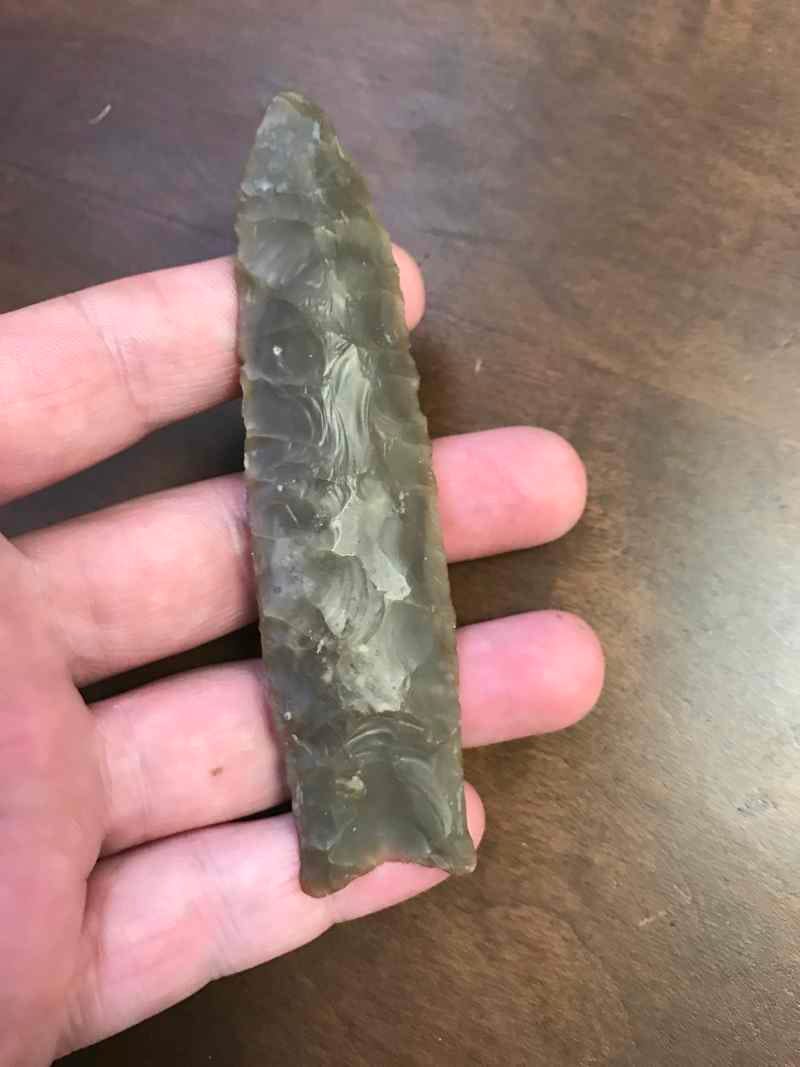
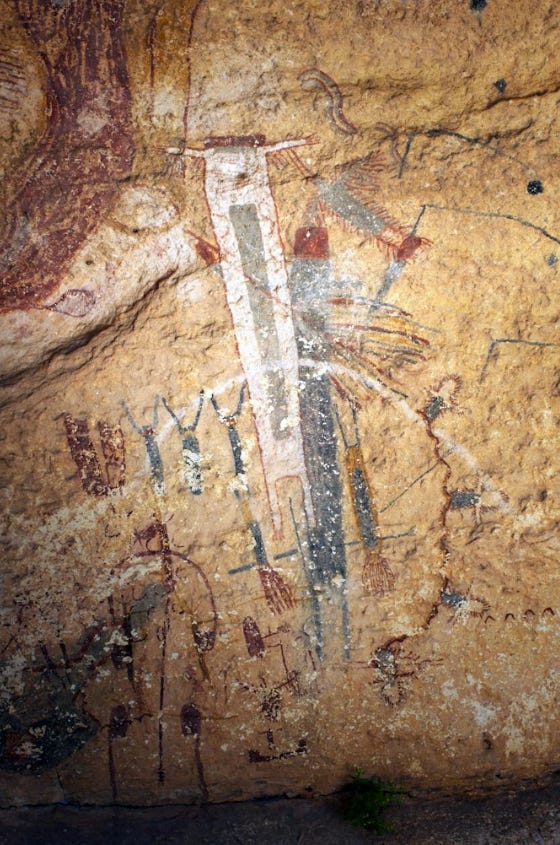


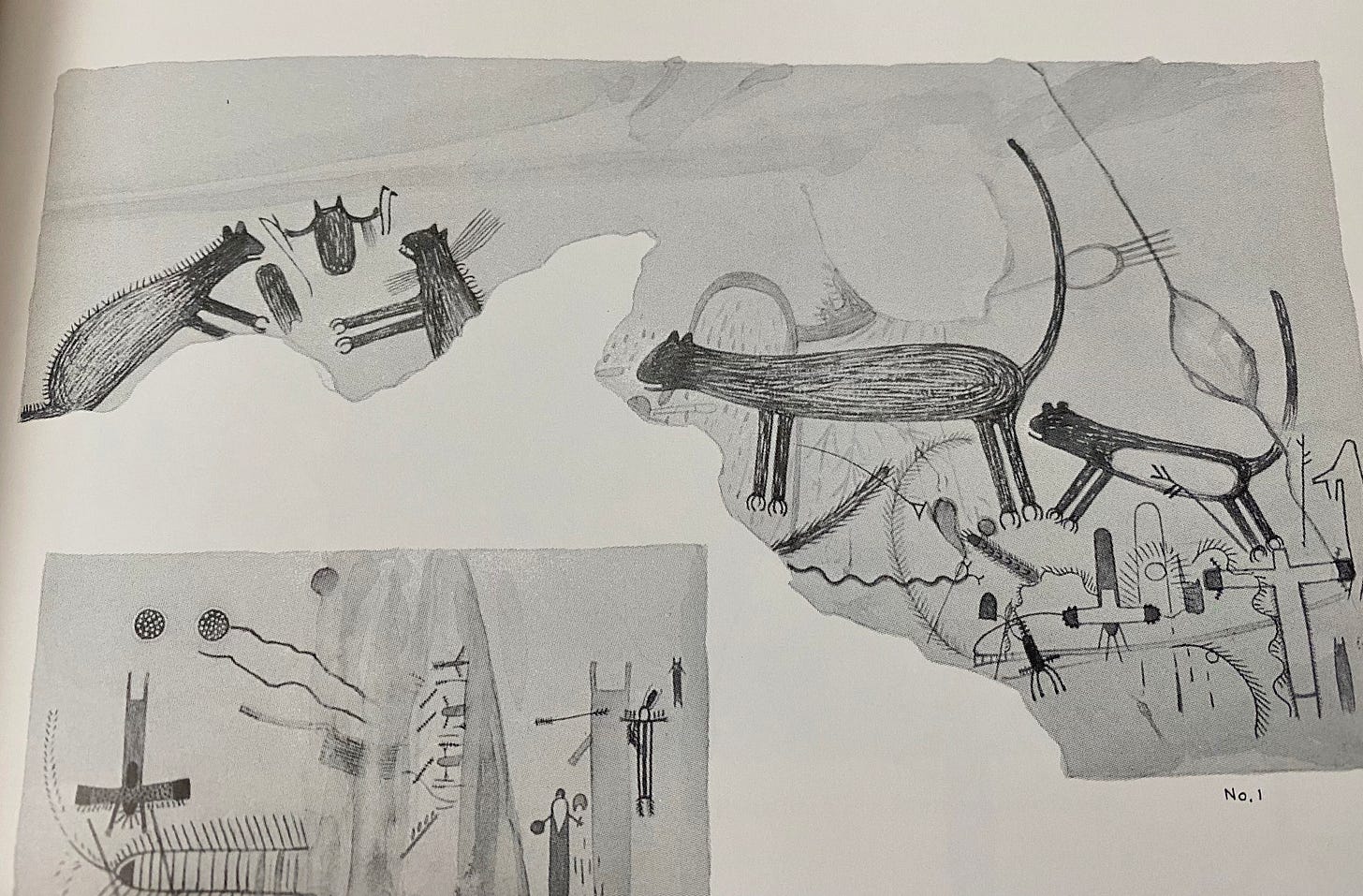



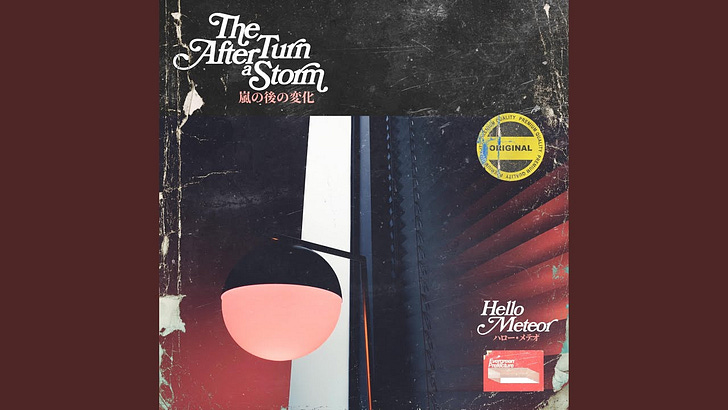

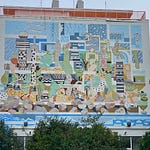
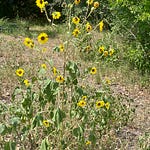
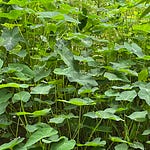

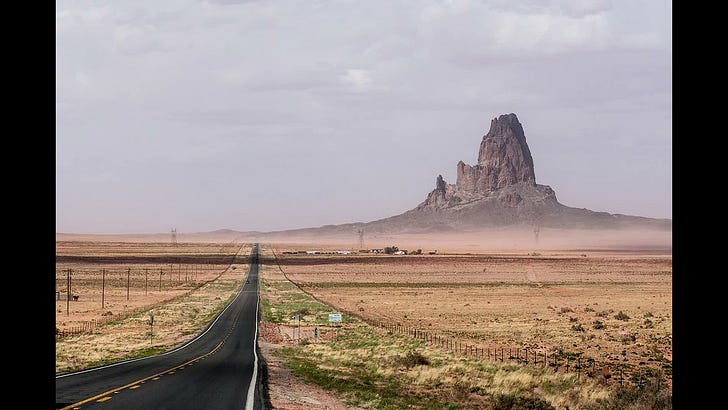
Share this post